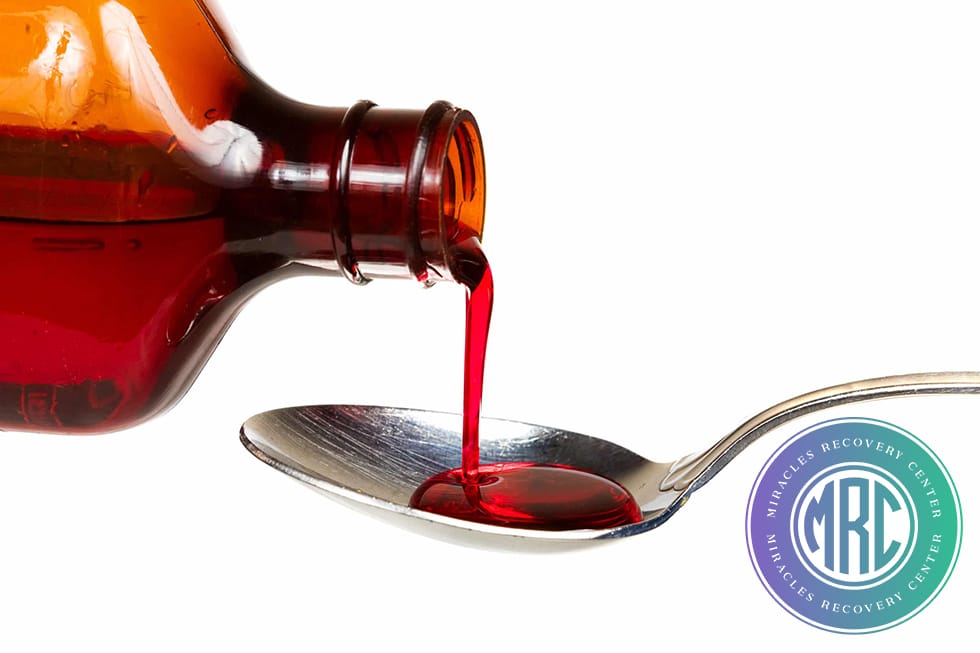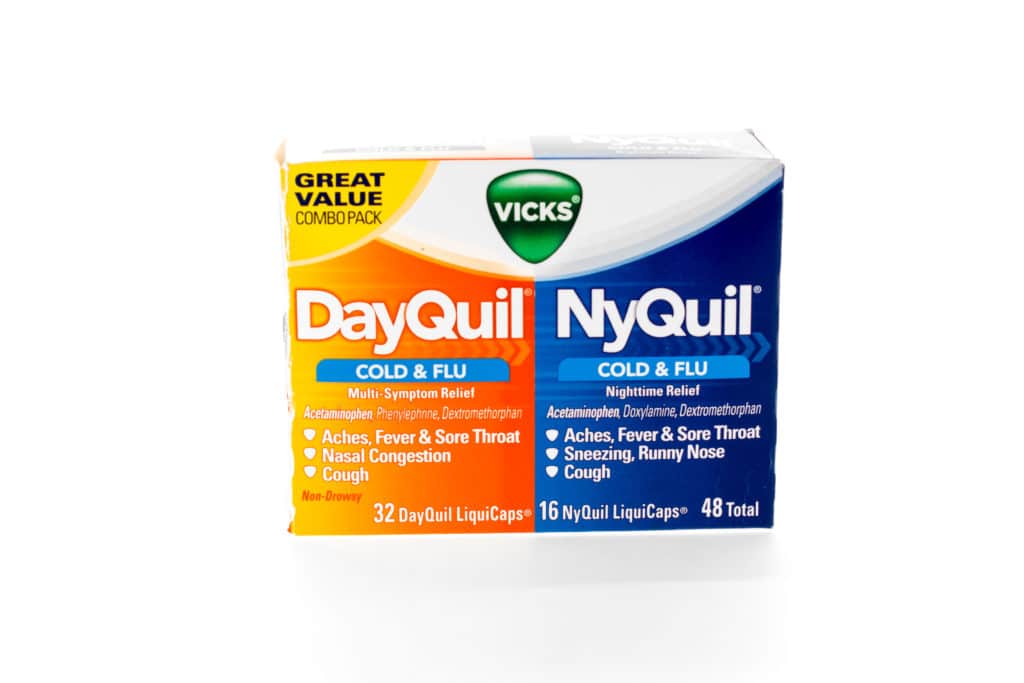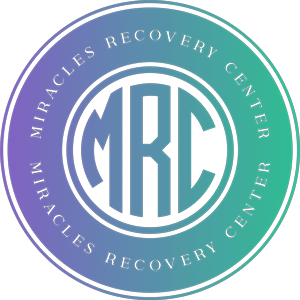You probably never thought twice about having an alcoholic beverage while using an over-the-counter daytime cold and flu medication. Why would you? There’s no alcohol in the medicine, right? While that is true, it’s the other ingredients in DayQuil that you need to watch out for.

Table of Contents
- 1 What’s In DayQuil?
- 2 The Danger of Using Alcohol and DayQuil Together
- 3 Acetaminophen Can Be Dangerous?
- 4 What’s DXM?
- 5 A Serious Problem
- 6 Drinking Alcohol After Taking DayQuil
- 7 Using Other Meds With Alcohol
- 8 Treatment for DXM/Alcohol Addiction
- 9 Treatment Programs
- 10 Think You Have a Problem?
- 11 References:
What’s In DayQuil?
Although Dayquil Cold & Flu is a popular cold medicine, is typically used as a decongestant, cough suppressant, and fever reducer, it contains ingredients that can interact with other substances, including alcohol. DayQuil comes in several formulas and many contain active ingredients, the drugs dextromethorphan(a cough suppressant) and acetaminophen(a pain reliever), it may also contain phenylephrine(a decongestant). These ingredients are not safe to use in combination with alcohol. For people who are struggling with alcohol addiction, it’s best to be wary and avoid all medications that contain acetaminophen or dextromethorphan.
The Danger of Using Alcohol and DayQuil Together
If you’re taking DayQuil and continuing to drink alcohol, you take the chance of developing:
- Dizziness
- Nausea and vomiting
- Drowsiness
- Damage to your liver
Consuming high doses can lead to:
- High blood pressure
- Hallucinations
Acetaminophen Can Be Dangerous?
One of the important ingredients in DayQuil is acetaminophen. Acetaminophen is sold under the brand name Tylenol and is the most common medication ingredient in the country. It can be found in over 600 different medications including many popular over-the-counter medications. It is even safe for children. But although it is good at relieving pain and reducing fever, it can also be toxic for your liver.
The truth is, the main cause of acute liver failure in the United States is acetaminophen overdose. It is also the second leading cause of liver transplantation due to liver failure. So, taking acetaminophen, or medicine that contains it, and drinking alcohol (also hard on your liver), increases your prospect of liver damage. Procter & Gamble, the maker of DayQuil, has issued the precaution not to drink at all while using DayQuil, particularly if you have been a heavy or regular drinker.
Side Effects of Combining Alcohol and Acetaminophen
- Joint swelling or pain
- Fever
- Chills
- Extreme weakness or fatigue
- Abnormal bruising or bleeding
- Appetite loss
- Nausea and vomiting
- Yellowing of the skin and in the whites of the eyes
Acetaminophen and Liver Damage
The problem of using too much acetaminophen or combining it with alcohol comes from how your body breaks down acetaminophen. When the liver processes acetaminophen, it is broken down into various substances. These substances are mostly removed in our urine. However, one of them is known as NAPQI, and it is particularly tough on your liver.
Fortunately, when acetaminophen is used in safe amounts, the body is able to deal with the harmful effects of NAPQI. A strong antioxidant called glutathione is used by the liver to effectively neutralize the NAPQI and keep it from damaging your liver cells. Unfortunately, people who drink heavily (3 or more drinks a day) cause glutathione levels to sink, allowing NAPQI to build up to dangerous levels. This is what damages liver cells. This also means that chronic drinkers have a higher risk for an unintentional acetaminophen overdose which can wind up in severe liver damage or liver failure.
Acetaminophen Overdose Symptoms
- Pain in the abdomen
- Appetite loss
- Tiredness
- Nausea and vomiting
- Diarrhea
- Yellowing of the eyes or skin
- Convulsions
- Coma
What’s DXM?
DXM is dextromethorphan. It’s the ingredient in DayQuil that works as a cough suppressant and it too is unsafe when combined with alcohol.
DXM Side Effects
- Lightheadedness
- Dizziness
- Concentration problems
- Nausea and vomiting
- Drowsiness
When you combine alcohol and DayQuil, these side effects get even worse including a decline in thinking and judgment capabilities. These side effects illustrate why you aren’t supposed to take part in activities that require you to be mentally alert–like driving or operating hazardous machinery.
Unfortunately, a common problem of teens in the U.S. is the abuse of products that contain DXM. It’s popular to use excessive amounts of the drug for its psychoactive effects. This practice is called “robotripping” or “skittling.” Due to the large number of teens abusing DXM, some states have banned children under the age of 18 from buying over-the-counter medicine that contains dextromethorphan.
Side Effects of Robotripping
- Euphoria
- Hallucinations (visual and auditory)
- Jumpiness
- Sluggishness
- Slurred speech
- Heavy sweating
- Loss of coordination
- Increased blood pressure
Consuming high doses of DXM with alcohol may cause these effects:
- Shallow breathing
- Stupor
- Coma which may lead to death
DXM Overdose Symptoms
- Hallucinations
- Constipation
- Pounding or rapid heartbeat
- Unsteadiness
- Problems breathing (slow, shallow, difficult)
- Intestinal and stomach contractions
- Elevated body temperature
- Drowsiness
- Seizures
- Coma which may lead to death
NyQuil and Other Nighttime Medications
Another popular cold and flu medication is NyQuil. Made by the same manufacturer as DayQuil, NyQuil is the version meant for nighttime use. It has the same risks plus more because of its additional ingredients. Considering the adverse effects these products can have on your health, it’s recommended not to drink alcohol when using DayQuil or NyQuil. However, if you have an alcohol use disorder (AUD) and find it too hard to stop drinking, it’s safer to avoid the DayQuil and just rough it through your cold or flu.
DXM Withdrawal Symptoms
DXM is technically considered non-addictive, but if it’s used excessively, it is far from safe. If you’re struggling to quit DXM, you may need professional help. DXM withdrawal symptoms can be extremely uncomfortable, although they aren’t generally life-threatening. Symptoms include:
- Restlessness
- Insomnia
- Bone and muscle aches
- Diarrhea
- Vomiting
- Cold flashes
Alcohol Withdrawal Symptoms
Unlike DXM, alcohol can be very addictive. If you are also suffering from AUD, it’s likely that you will need a medically supervised detox to withdraw from alcohol. Alcohol withdrawal can be very difficult and may be life-threatening. Symptoms include:
- Anxiety
- Fever
- Headache
- Shaky hands
- Nausea and vomiting
- Extreme sweating
- Delusions and hallucinations
- Seizures
- DTs (delirium tremens)
A Serious Problem
Robotripping can be intensified by introducing alcohol to the situation. It’s common for people to use dextromethorphan all day long to maintain a persistent high. Doing this can cause you to develop a tolerance, including a physical and psychological dependence on DXM and alcohol.

Drinking Alcohol After Taking DayQuil
The effects of DayQuil last about 4 to 6 hours, depending on how you’re feeling. Although it’s not recommended to drink while using DayQuil, you could have a drink 4 to 6 hours after your last dose. A single drink of alcohol, however, can last in your body for about 3 hours. Therefore, it’s best to wait about 3 hours before taking another dose of DayQuil.
If you take a dose of DayQuil at 8:00 a.m., you should be safe to have a drink by 1:00 or 2:00 p.m. If you have that drink at 2:00, you will need to wait until at least 5:00 to take more DayQuil. Then you will need to wait until 11:00 p.m. for another drink etc. If that’s not enough to make you think twice about it, remember, the time periods vary from person to person.
Using Other Meds With Alcohol
There are hundreds of prescription and OTC medications that aren’t safe to use with alcohol. The hazards of mixing alcohol with medicine can vary from increasing side effects to life-threatening symptoms, overdose, and death.
Cough Suppressants
Combining alcohol with products meant to treat a cough can cause:
- Dizziness
- Sleepiness
- Loss of coordination
That’s because one of the ingredients in most cough medicines is DXM. As previously described, it can cause extreme sedation and respiratory depression. This mixture can be especially serious and has the potential to be deadly if the medicine also contains alcohol.
Diabetes Medication
Drinking alcohol can affect your blood sugar levels. And drinking alcohol with your diabetes medications can magnify the effect. You may experience symptoms such as:
- Nausea and vomiting
- Tachycardia (rapid heartbeat)
- Headache
- Blood pressure fluctuations
Heartburn Medicine
Drinking alcohol while taking medications for heartburn, whether OTC or prescription, can cause tachycardia, and sudden blood pressure changes.
Medication for High Blood Pressure
These symptoms may result if you combine hypertension medication and alcohol:
- Dizziness and fainting
- Drowsiness
- Arrhythmia (irregular heartbeat)
Muscle Relaxers
If you have a medical condition or an injury that causes muscle spasms or pain, you might be taking medication to relax them. Muscle relaxers and alcohol are both depressants and when mixed can affect your central nervous system (CNS). Your CNS controls your heart, lung, and brain functions.
Opioid Pain Medications
One of the most lethal combinations is alcohol and opioid pain medications. Alcohol escalates the side effects of opioids and increases the possibility of a fatal overdose. That being said, these are some side effects of opioids when used alone:
- Sleepiness
- Dizziness
- Impaired or slow breathing
- Loss of motor skills
- Abnormal behavior
- Loss of memory
Treatment for DXM/Alcohol Addiction
There aren’t any medications specifically for the treatment of DXM addiction. But if you have a co-occurring alcohol use disorder, you will need a more in-depth treatment plan. There are medications approved for treating alcohol withdrawal and proven methods for detoxing from alcohol addiction.
In the treatment options of any substance use disorder (SUD), the use of behavioral therapies has proved to be one of the most effective methods. Common behavior therapies for addiction treatment are:
Cognitive-Behavioral Therapy (CBT)
CBT is an approach to treatment that has substantial scientific evidence that its methods do produce change. CBT includes efforts to change thinking patterns by using these strategies:
- Learn to recognize your faulty thinking that is creating problems and then reevaluate in the light of reality
- Gain an understanding of the motivation and behavior of other people
- Use problem-solving skills to cope with difficult situations
- Learn to develop confidence in your abilities
- Face your fears instead of avoiding them
- Learn to calm your mind and relax your body
Dialectical Behavioral Therapy (DBT)
DBT is a form of cognitive-behavioral therapy. The main goals are to teach individuals how to:
- Live in the moment
- Establish healthy ways to cope with stress
- Regulate their emotions
- Improve relationships with other people
Originally meant to treat borderline personality disorder, DBT has been adapted to treat other mental health conditions including substance abuse disorders. DBT is often used in other settings such as:
- Group Therapy: People are taught behavioral skills in a group setting
- Individual Therapy: Individuals work closely with a therapist to explore any underlying causes for addiction and to learn behavioral skills that can be adapted to their personal life.
Treatment Programs
If you need a treatment program for an AUD, a DXM addiction, or a combination of both, there are usually several levels of care available. Many times, people need a medically supervised detox before entering a treatment program. This depends on the severity of the addiction and the associated withdrawal symptoms. Contingent on your needs and wants, you may opt for:
Residential Treatment Program
This is the highest level of care where you will live at the treatment facility. If you have a severe, long-term addiction, you may need the safety, security, and total structure of a residential program.
Partial Hospitalization Program (PHP)
While technically an outpatient program, a PHP falls between residential and outpatient treatment. In a PHP you spend 7 days a week at the treatment facility, but you return to your home in the evenings.
Intensive Outpatient (IOP) and regular Outpatient (OP) Programs
The difference between these two programs is the number of days and hours spent at the treatment facility.
Think You Have a Problem?
Do you suspect that you or a loved one has a problem with DXM or alcohol? You wouldn’t be the first or the last. At Miracles Recovery Center we understand and have made it our calling to design treatment programs specifically for each individual. We can provide several levels of care, therapy programs, and specialized therapy for seniors, women, and young adults. Contact us today. You have everything to gain.
FAQ
Can you drink on DayQuil?
How long after taking DayQuil can you drink alcohol?
Can you mix Alcohol and DayQuil together?
What are the potential side effects of mixing Alcohol and DayQuil?
How does alcohol consumption affect the effectiveness of DayQuil?
What is the recommended time gap between consuming alcohol and taking DayQuil?
Are there any safer alternatives to DayQuil that can be used with alcohol?
What are the ingredients in DayQuil?
What is the DayQuil dosage?
References:
https://www.niaaa.nih.gov/publications/brochures-and-fact-sheets/harmful-in
https://www.drugs.com/food-interactions/acetaminophen-dextromethorphan
